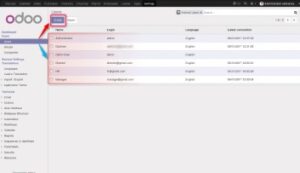
Under the perpetual inventory system, an entity continually updates its inventory records in real time. Perpetual inventory is by far the preferred method for tracking inventory, since it can yield reasonably accurate results on an ongoing basis, if properly managed. Indirect costs are those that you can’t tie directly to the production process. Instead, you must allocate each indirect cost to your products using various methods to determine the value of each unit.
Extending the Material
The direct costing method in manufacturing accounting allows businesses to only consider variable costs without becoming encumbered with fixed expenses. Direct costing is primarily useful in undertaking pricing decisions for the short term. The method cannot be applied to long-term pricing decisions as it requires tangible information surrounding overhead costs and other aspects of production. Direct costing methods can be used in periods when the market sees changes and businesses might have to tweak previous decisions for the time being. Manufacturers often deal with a vast array of costs incurred by their business’ production process. Keeping track of these costs is crucial to the seamless operations of the business.

What to look for in manufacturing accounting software
The content on this website is provided “as is;” no representations are made that the content is error-free. After you have created a material master, business situations require periodic updates to the material master. Manufacturing businesses have their own special accounting requirements – here’s what you need to know. If you are a customer with a question about a product please visit our Help Centre where we answer customer queries about our products. When you leave a comment on this article, please note that if approved, it will be publicly available and visible at the bottom of the article on this blog.
Get the right accounting deal for your company
Insight into variable and fixed costs helps manufacturers make decisions on production volumes, adjust to market trends, etc. To understand why manufacturing accounting differs from other accounting forms, one must first understand how manufacturers produce their products. Your cost of goods manufactured includes all direct and indirect costs that go into the products you finish producing during an accounting period. Like the cost of goods sold, it generally refers to direct materials, direct labor, and manufacturing overhead. With numerous accounting methods and costing strategies that manufacturing businesses can use, it is always important to ensure that cash flow is maintained to avoid hiccups during production.
Accounting for Manufacturing Costs
- As you can see, accountancy for manufacturing is about much more than just recording numbers.
- Your accounting methods should allow you to record financial data with ease, in a way that is structured and easy to monitor.
- With robust reporting features, you gain valuable insights into your operations and identify areas for improvement.
- We recommend using software that is well integrated with the overall production and inventory management solution of choice.
This information can help companies budget for future production runs and make informed financial decisions. The International Financial Reporting Standards (IFRS) prohibits it, and businesses in the United States may not be able to use it forever. Manufacturing accounting follows the same fundamental principles as accounting in other industries, but there are many more moving parts than usual.
Please do not copy, reproduce, modify, distribute or disburse without express consent from Sage. The solution to this dilemma is to look at the process of upgrading your manufacturing accounting processes as a cycle of continuous improvement. Rather than a one-and-done approach, monitor and regularly review the effectiveness of your current processes.
This insight is invaluable for businesses looking to maximize their profit margins while still providing a high-quality product or service for their customers. In recent years, technology has changed the way accountants work with faster access to data while also making it easier for them to analyze large amounts of information quickly and accurately. A periodic inventory system is a simplified system for calculating the value of an ending inventory. It only updates the ending inventory balance in the general ledger when a physical inventory count is conducted. Since physical inventory counts are time-consuming, few companies do them more than once a quarter or year. In the meantime, the inventory account in the accounting system continues to show the cost of the inventory that was recorded as of the last physical inventory count.
Manufacturing accounting software helps you track your financials in real time using cloud-based technology and multi-platform integrations. This can result in drastically different figures for your business financials, which is why it’s important to use the right approach based on your specific business requirements. Manufacturing overhead costs are indirect examples of fixed assets costs that are incurred during a particular accounting period but cannot easily be accounted for on a per-unit basis. When tracking manufacturing expenditure, it’s important to understand both direct and indirect costs. Manufacturers take a unique approach to accounting because they don’t just ship, sell, and service goods – they create goods.
Manufacturing business owners can also consider financing options such as invoice factoring to maintain a streamlined flow of money in their operations regardless of the market outlook. The above methods will also help businesses choose what suits their operations the best, ensuring production performance is optimal and profits are commensurate with expectations. Unlike retail and service-oriented operations, manufacturing businesses face a special set of challenges regarding accounting and costing methods.
The cost of the most recently sold unit is based on the most recent set of raw materials purchased. FIFO accounting for manufacturing inventory considers the first units received into inventory are the first ones sold. Think of a storage area that is filled from the rear with the most recently manufactured units, but shipments are taken from the front.
For example, a manufacturer of made-to-order furniture would likely employ job costing. The last-in-first-out (LIFO) inventory valuation think twice about gifting gift cards method is the opposite of the FIFO approach. Getting expert tax and accounting advice is worthwhile for virtually every business.
Deploying a modern manufacturing planning engine can also ensure sufficient inventory is available to meet the demands of the business but that excess inventory is not causing undue strain on the business. Rootstock has purpose-built features for real-time inventory management for manufacturers. Manufacturing costs and inventory valuation can be calculated via several methods. These different methods can impact inventory costs and COGS as raw material prices or markets fluctuate, especially for longer manufacturing processes.
Unit of measure is critical when determining the cost of a manufactured item. For example, if a purchasing manager procures wire by the foot, an inventory clerk monitors storage by the spool, and the production manager tracks usage by the inch, problems can quickly arise. Cost accounting processes might miss the different units of measure, resulting in inaccurate reports, cost analyses, and forecasts.
At Taxfyle, we connect small businesses with licensed, experienced CPAs or EAs in the US. We handle the hard part of finding the right tax professional by matching you with a Pro who has the right experience to meet your unique needs and will manage your bookkeeping and file taxes for you. Understanding manufacturing costing is like assembling a complex machine; every part must fit perfectly to work efficiently. You can use the status information function to check whether a material is subject to restrictions and to identify the applicable restrictions. You can start this function while creating, displaying, or changing a material master record. When you create a material you normally use the classic material transaction.
As a result, your manufacturing company may get to choose between using cash or accrual accounting. While the cash method is often easier to implement, it’s not always net cash definition the best way to organize your financial records. As a result, it’s worth investing in developing a deeper understanding of the related accounting and tax rules.

Speak Your Mind